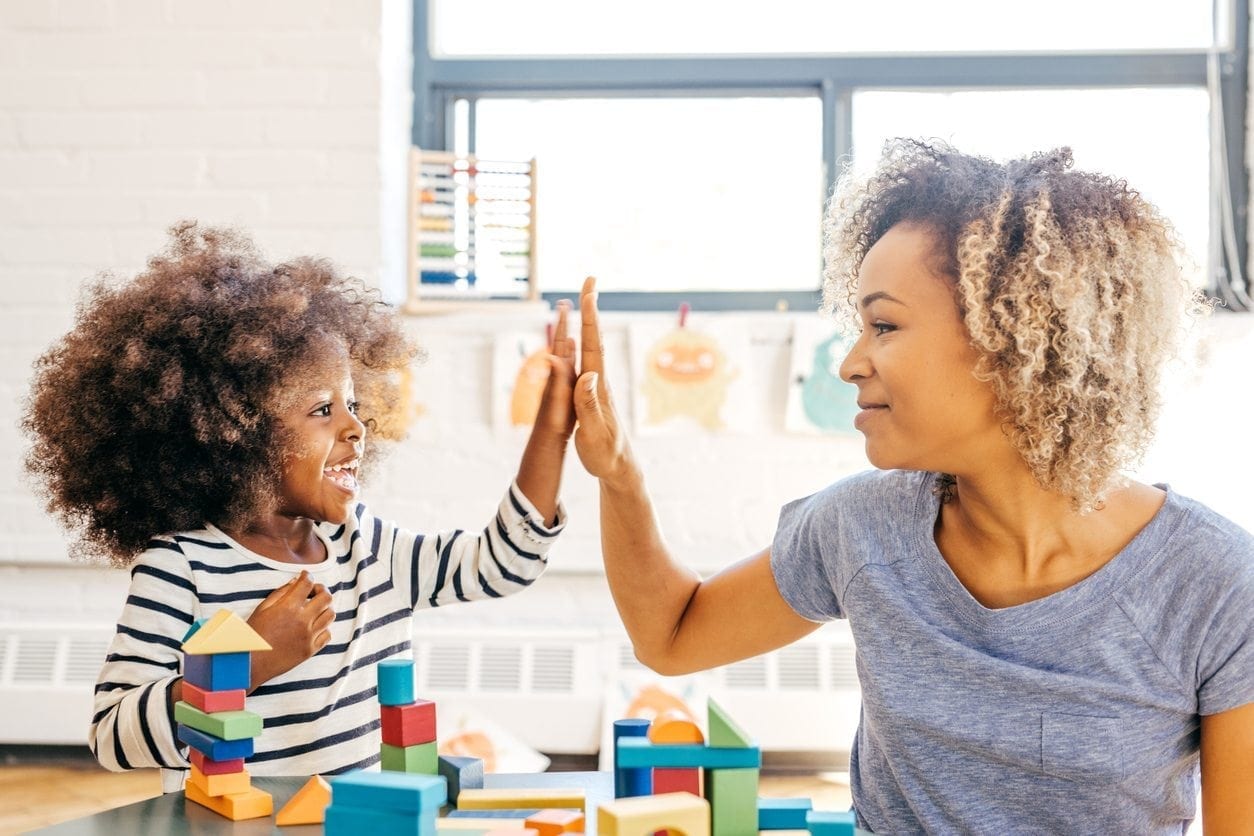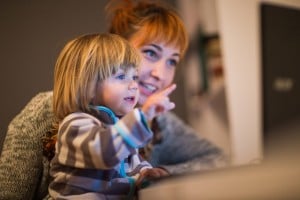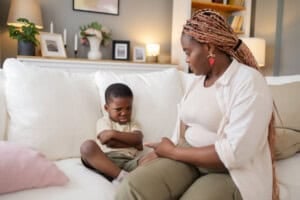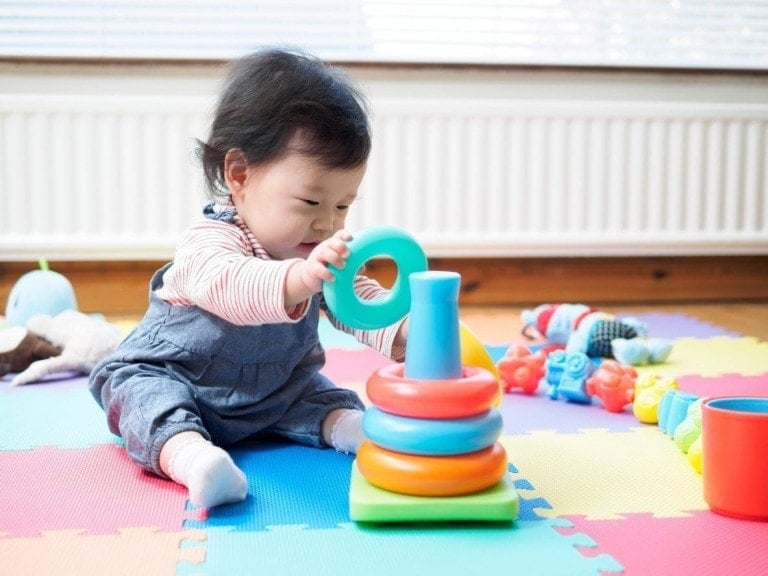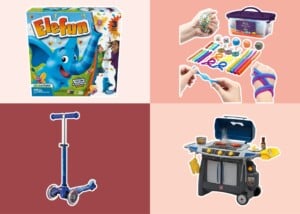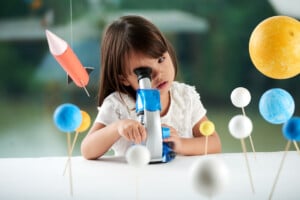As a pediatric occupational therapist working with children of all ages, I see all developmental levels, and no age group is more diverse than the five-year-old. Five-year-olds entering kindergarten come from a large variety of backgrounds. Some have been in daycare or preschools for years before starting kindergarten, using finger paint, scissors, and crayons, learning how to sit on the carpet for storytime, learning how to walk quietly in a line down the hallway, learning to wait their turn for a toy during playtime. Others come from very enriched home environments where parents practice ABCs, write names, memorize addresses, and tie shoes. While a small group comes with very little preparation, having never held a pair of scissors or even a crayon. I have seen children start kindergarten not knowing their last names.
Some school districts present parents with huge packets of information and activities to prepare the budding kindergartener. Some schools hold assessments, information sessions, and online tutorials, while other districts provide no pre-kindergarten information. It is never too early to start working on kindergarten-ready skills. Here are some universal skills that kindergarten teachers will expect your little scholars to know when they walk through the door on the first day of kindergarten.
Letters and Words:
- Recognize and name at least 10 letters of the alphabet.
- Match letters with the beginning sounds of words: B, Banana
- Recognize rhyming words: cat, hat
- Recognize letters of their name.
- Understand concepts such as top/bottom and big/little.
- Use the words “more” and “less” correctly.
- Recognize and name at least 5 colors.
To help your child learn these skills, do these things:
- Read to your child.
- Point out letters in books and on signs.
- Sing the alphabet.
- Use a highlighter to highlight letters on cereal boxes or in magazines.
- Designate a letter of the day.
- Point out letters on license plates.
- Trace letters in hair gel, use shaving cream in the bathtub, and write with sidewalk chalk or a paintbrush dipped in water on the sidewalk.
- Learn large to small and with their hands first.
- Make letters out of blocks, uncooked spaghetti, and strips of paper.
- Write letters in a sand tray.
- Make an alphabet book with each page as a letter.
- Cut pictures out of magazines for each letter.
- Use magnetic letters.
- Eat alphabet soup.
- Play concept games, “what is bigger?”
- Ask your child to put a book on top of her head, under her feet, on the chair, or beside the chair. This is important for spatial skills and directionality.
- Designate a color day, wear that color, look for that color, make that color of food, etc.
- Play the matching game.
- Put construction paper on the floor in 4 different colors and have your child go around the house and find small items that match the color to put them on the piece of construction paper.
- Use colored paint, finger paint, sidewalk chalk, and playdough.
Speaking:
- Speak in complete sentences.
- Follow directions with at least two steps.
- Ask questions about the world around them.
Reading:
- Re-tell simple stories after listening to them.
- Make simple predictions about the story being read to them.
- Hold a book appropriately, turn pages, and look at pictures and some words to get an idea of the story.
To help your child learn these skills, read to your child, encourage conversation, and ask about their day. For example, at dinner, ask what the best, worst, and funniest thing that happened all day. Sing songs, nursery rhymes, and fingerplays. Ask your child to articulate things, such as his three favorite things about himself and why. If he mispronounces words, gently correct articulation.
Numbers and Shapes:
- Count from 1-20 in order.
- Put written numerals in order from 1-10.
- Draw a line, a circle, an x, and a + symbol.
- Recognize and name simple shapes.
Counting with one-to-one correspondence is the foundation for early math skills, but this can be difficult for kids to coordinate. There are tons of opportunities to count: toys, cars, french fries . . .
Concepts (same, different, patterns):
- See the number 3 and understand this means 3 objects.
- Add and subtract familiar objects, such as Cheerios.
- Match two pictures that are alike.
- Sort items into like categories.
- Put 3 pictures in order by sequence: Planting a flower seed, the flower growing, picking the flower.
Think about sorting while putting toys away, putting silverware in the drawer, helping with laundry, sorting socks, and asking him to put all the green matchbox cars on one side and red on the other during play.
Self Care:
- Put on jacket independently.
- Attempt zippers and buttons.
- Attempt to tie shoes.
- Use the bathroom and wash hands independently.
- Open food containers independently.
- Use good habits (chew with mouth closed, cover mouth when coughing).
- Tell first and last name, full address, and telephone number.
- Recognize dangerous or harmful objects or situations.
Practice these skills early and often. Praise your child for his independence.
Gross Motor Skills:
- Run, jump, and hop on one foot with ease.
- Balance on one foot with hands on hips for 10 seconds.
- Stand on tiptoes for 8 seconds.
- Imitate movements.
- Do at least 5 sit-ups.
- Skip for at least 10 steps.
- Throw a ball underhand and catch a ball in both hands.
- Kick a ball.
Play sports in the backyard, work with large balls, then smaller ones, and encourage climbing, pushing, and pulling things to build strength. Yoga is great for building core strength. Act out animals for full-body movement. Old-fashioned obstacle courses and wheelbarrow races are also great practice for gross motor skills.
Fine Motor Skills:
- Hold pencil and crayon with tripod (three-finger) grasp.
- Trace letters, shapes, and numbers.
- Write letters of name.
- Write numbers 1-10.
- Cut out patterns with scissors.
- Lace string through lacing cards.
- Draw a circle, triangle, rectangle, and cross.
Practice two-handed activities such as lacing cards, hole punch, stringing beads, stencils, pegboards, tearing paper, twist ties, pipe cleaners, clothes pins, zip lock bags, and eye droppers. Some great hand-strengthening activities include play-doh, clay, screwing and unscrewing nuts and bolts off screws, using clothespins, paperclips, and legos.
For scissor skills, start cutting strips of cardboard, then straws, then paper, then shapes. Play with blocks, Legos, Duplo blocks, pick-up sticks, and Lincoln logs. You can also play with your child with puzzles, play the piano or another instrument, use the computer keyboard, squirt bottles, and sock puppets.
Social/Emotional Skills:
- Appropriately resolves conflicts with playmates.
- Expresses ideas through pictures she draws.
- Start and join in conversations with adults and other children.
- Says “Please” and “Thank you.”
- Demonstrates happiness and sadness appropriately.
- Accept changes in routine.
- Ask for help when needed.
- Follows directions and rules.
- Demonstrates coping skills.
- Helps with clean-up.
- Waits their turn.
- Respects others’ personal space.
Spend time at the playground with other children or set up playdates. Play simple board games with your child that require taking turns. Talk about feelings in books, movies, or TV shows. Model and role-play scenarios of sharing and greeting others.
In addition to working on these particular skills, give your children tons of new experiences, make reading a part of every day, point out letters and numbers in their everyday world, set up playdates and encourage independence in as many ways as possible, and remember kindergarten readiness starts at birth, not the month before the big yellow bus pulls up to the house. Skills build on skills, and just by talking to your newborn, you are beginning to lay the foundation!
